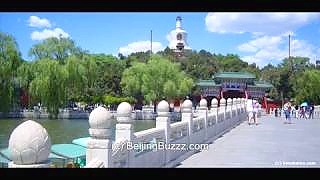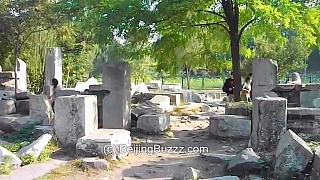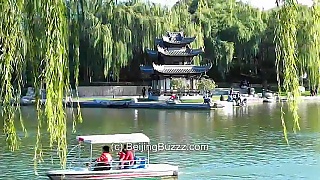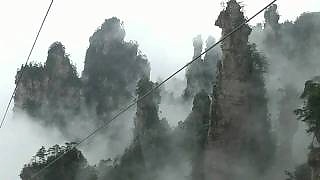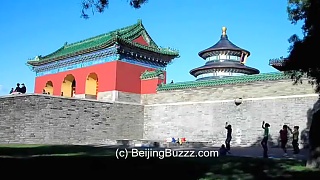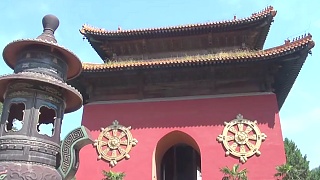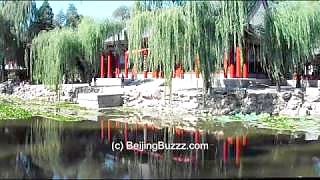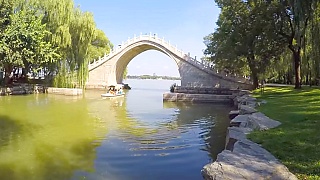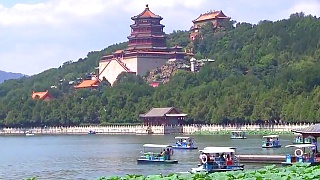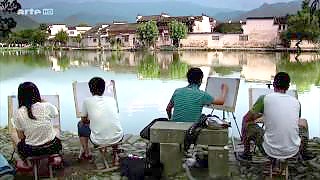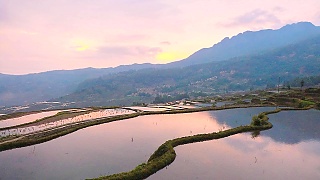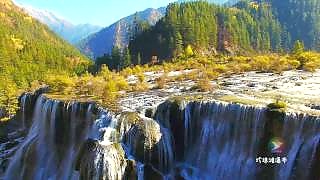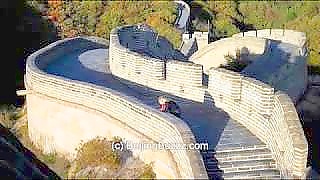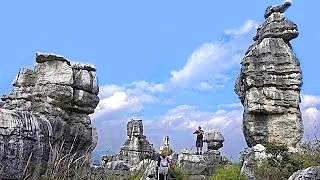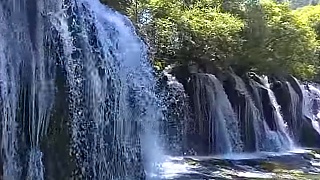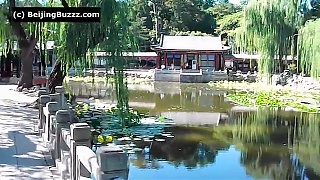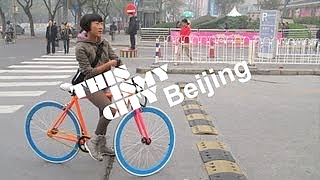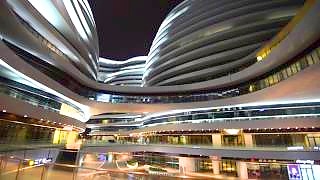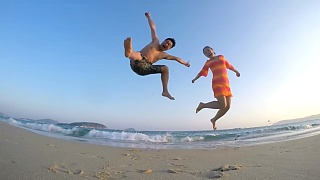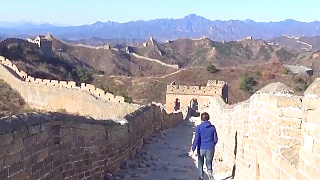The Summer Palace is the largest and best-preserved imperial garden in China.
As its name suggests, the Summer Palace was used as a summer residence by China's imperial rulers - as a retreat from the main imperial palace now known as the Palace Museum (or 'Forbidden City') - a pleasure-ground in the countryside, yet near to the city.
In 1860, as part of the 'Opium Wars', the Anglo-French Allied Forces invaded Beijing and set fire to many of the buildings within the original Summer Palace (YuanMingYuan).
In 1888, Dowager Empress CiXi, with funds embezzled from the Imperial Navy, restored the grand gardens. The reconstruction and enlargement of the Summer Palace continued for ten years. After completion, she renamed the gardens 'YiHeYuan' ('Garden of Peace and Harmony').
The Empress Dowager CiXi moved her administration to the renovated YiHeYuan in 1889 and the gardens here that had long been an imperial pleasure-ground became the primary Summer Palace.
Then, shortly after, the eight allied powers invaded in 1900 during the Boxer Rebellion to plunder and destroy the newly reconstructed New Summer Palace.
Only when the fugitive CiXi returned to Beijing in 1903, did full-scale restoration begin. In this way, the Summer Palaces - both old and new - are associated in popular culture with the destructive interference of foreign powers.
Today's Summer Palace is more or less the same as the palace rebuilt from 1903. It was designated a World Heritage site by UNESCO in 1990.
After the success of the 1911 Revolution, the Summer Palace was opened to the public. Then, after the last Qing Emperor PuYi was thrown out of the Palaces in 1924, the Summer Palace was turned into a park. The Summer Palace has become a popular and relaxing destination for both domestic and international tourists.
The Summer Palace is virtually a museum of traditional Chinese gardening that uses rocks, plants, pavilions, ponds, cobble paths and other garden styles to create a poetic effect between different scenes. The halls, pavilions, bridges and temples, Kunming Lake and Longevity Hill, all blend together harmoniously despite their individual styles.
Ingeniously conceived and elaborately designed, the Summer Palace, featuring the garden styles of both northern and southern China, is justifiably known as the 'Garden of Gardens'. Indeed, the Summer Palace represents a quintessentially Chinese ideal of harmony between man and nature.
Don't miss :
- the beautiful Garden of Harmonious Interests (a 'garden within a garden'),
- SuZhou Street and the Four Great Regions Tibetan-style temple,
- and the Tower of Buddhist Incense and Cloud Dispelling Hall on the hill.
The nearest subway station is BeiGongMen ('North Palace Gate') on line 4.
[640],shadow=true,start=,stop=
Beijing, the capital city of China, is a vibrant metropolis steeped in history, culture, and modernity. Here's a brief overview of what you can expect as a tourist in Beijing:
Historical Landmarks:
The Great Wall of China: One of the most iconic structures in the world, the Great Wall is easily accessible from Beijing. Mutianyu and Badaling sections are popular among tourists.
Forbidden City (Palace Museum): A UNESCO World Heritage Site, this vast imperial palace complex was home to Chinese emperors for over 500 years. It houses numerous halls, courtyards, and historical artifacts.
Temple of Heaven: A masterpiece of Chinese architecture, this ancient temple complex served as a place of worship for emperors to pray for good harvests.
Summer Palace: A stunning ensemble of lakes, gardens, and palaces, the Summer Palace served as a retreat for emperors during the Qing dynasty.
Tiananmen Square: One of the largest city squares in the world, Tiananmen Square is flanked by important landmarks such as the Monument to the People's Heroes, the Great Hall of the People, and the Mausoleum of Mao Zedong.
Cultural Sites:
Beijing Hutongs: Explore the narrow alleyways and traditional courtyard residences of Beijing's historic neighborhoods. You can take a rickshaw tour or simply wander around on foot.
Beijing Opera: Experience traditional Chinese opera performances at venues like the Liyuan Theater or the Chang'an Grand Theatre.
798 Art District: A hub of contemporary art and culture, this former industrial area is now home to numerous galleries, studios, and cafes.
Modern Attractions:
Olympic Park: Visit iconic structures such as the Bird's Nest (National Stadium) and the Water Cube (National Aquatics Center) from the 2008 Beijing Olympics.
CBD (Central Business District): Marvel at the futuristic skyline of Beijing's modern business district, which includes landmarks like the CCTV Headquarters and the China World Trade Center Tower III.
Culinary Delights:
Peking Duck: Indulge in Beijing's most famous dish, crispy roast duck served with pancakes, scallions, and hoisin sauce.
Street Food: Explore the city's vibrant street food scene and sample local delicacies like jianbing (savory crepes), lamb skewers, and dumplings.
Practical Tips:
Transportation: Beijing has an extensive public transportation system, including the subway, buses, and taxis. However, traffic can be heavy, so plan your travels accordingly.
Language: While English is not widely spoken, especially outside tourist areas, many signs and transportation announcements are in English. It's helpful to carry a translation app or a phrasebook.
Weather: Beijing experiences four distinct seasons, with hot summers and cold winters. The best times to visit are spring (April to June) and autumn (September to October) when the weather is mild and comfortable.
Etiquette: Respect local customs and traditions, such as removing your shoes before entering someone's home and using both hands to pass or receive items.
Beijing offers a rich tapestry of experiences for tourists, blending ancient heritage with modern innovations. Whether you're fascinated by history, culture, or culinary delights, there's something for everyone in this dynamic city.
 The Summer Palace 頤和園, BeiJing
The Summer Palace 頤和園, BeiJing


